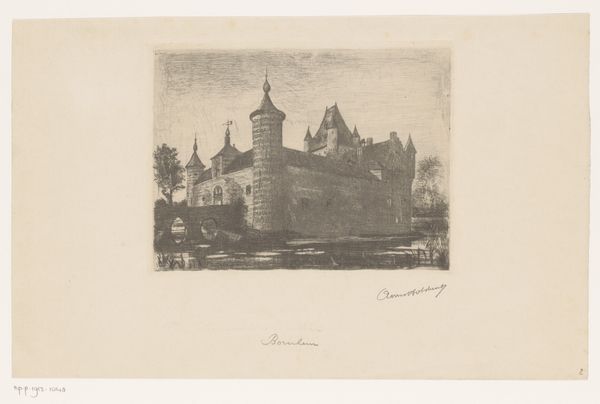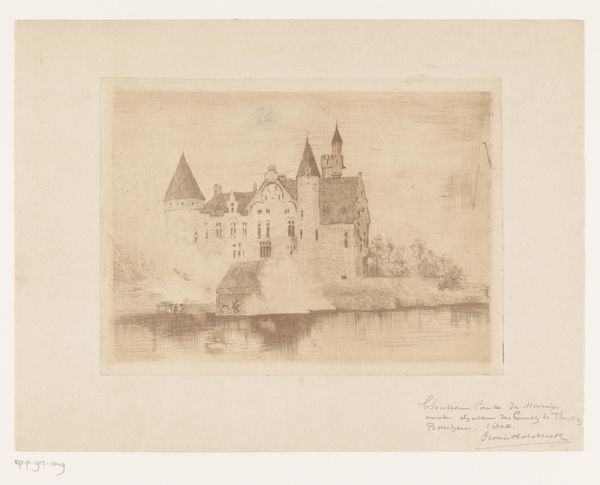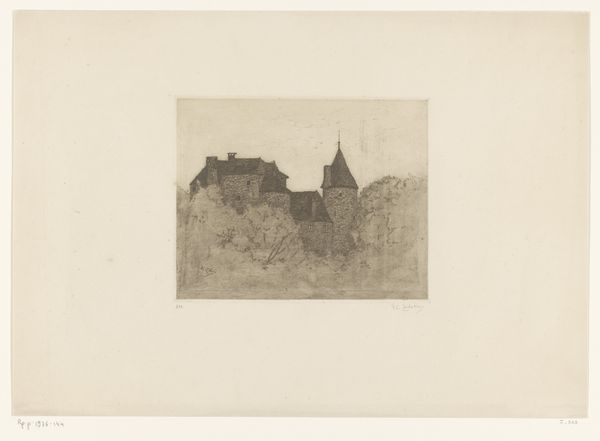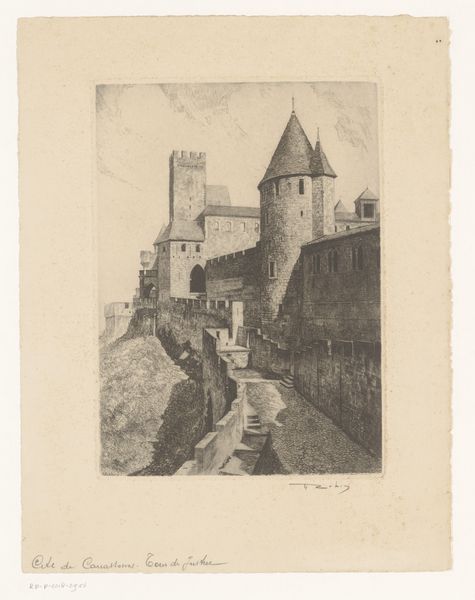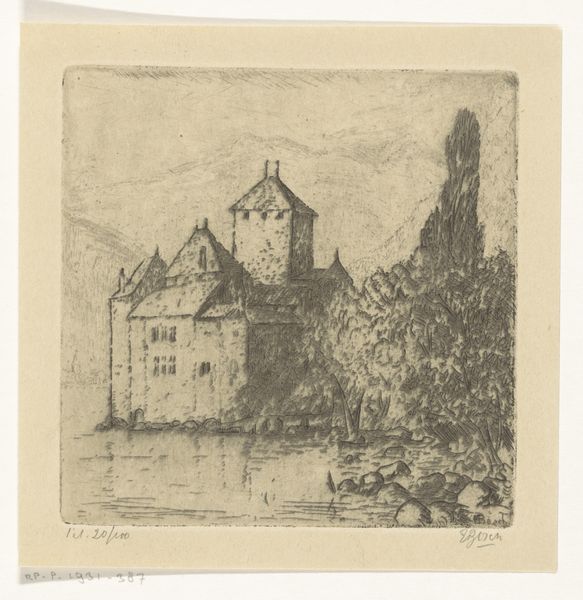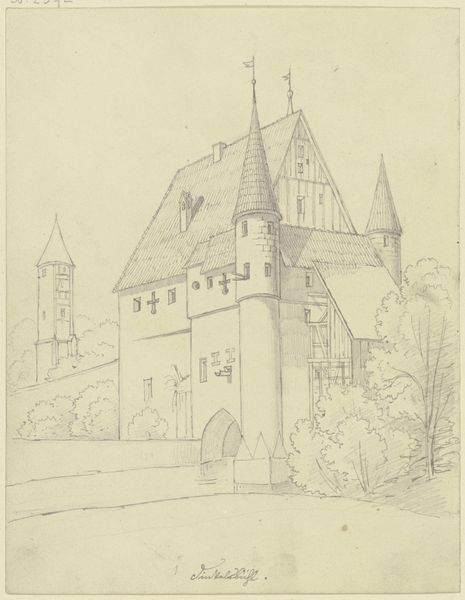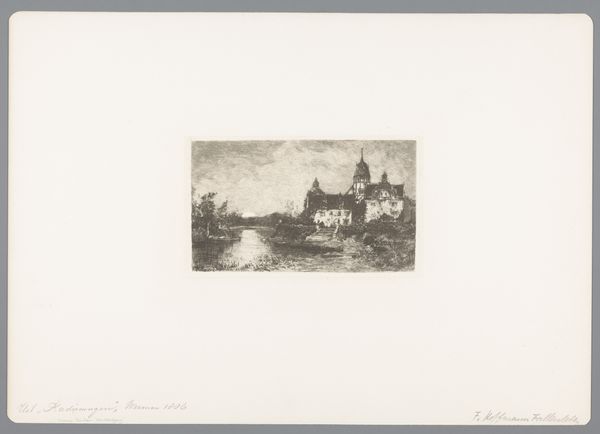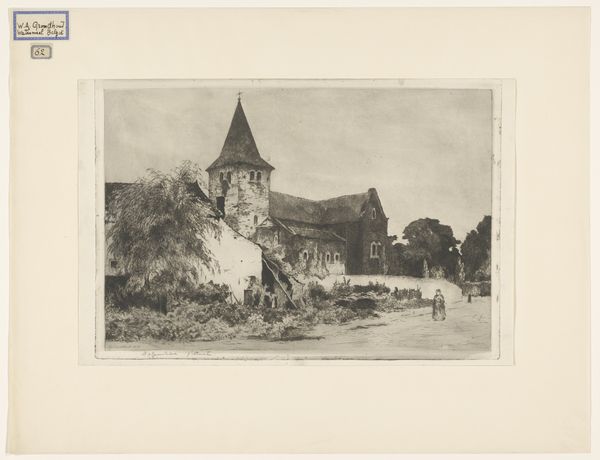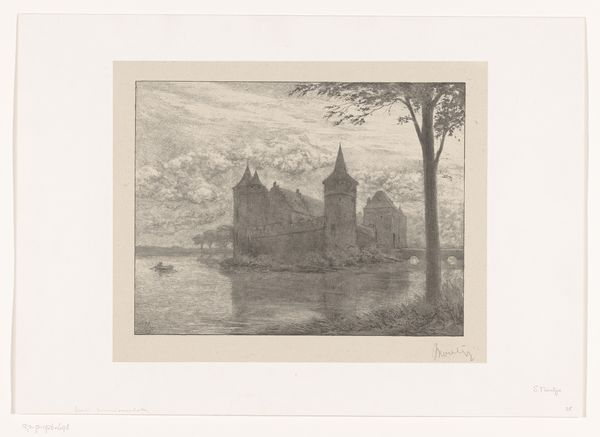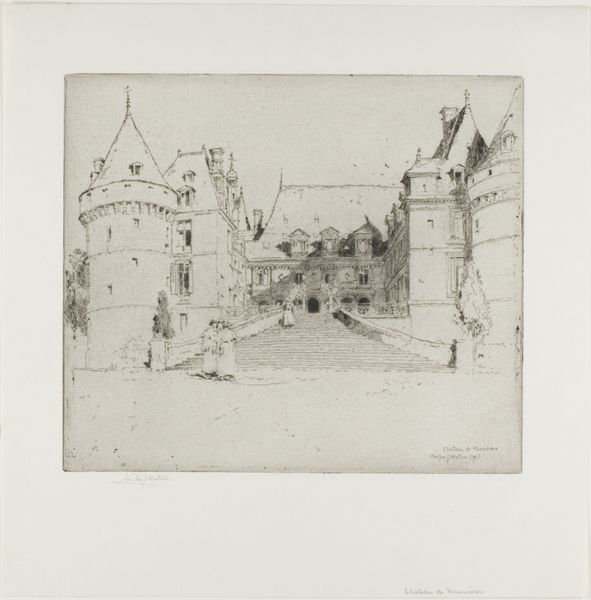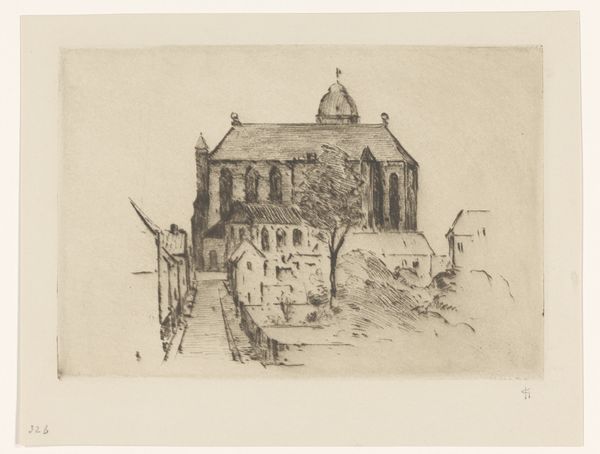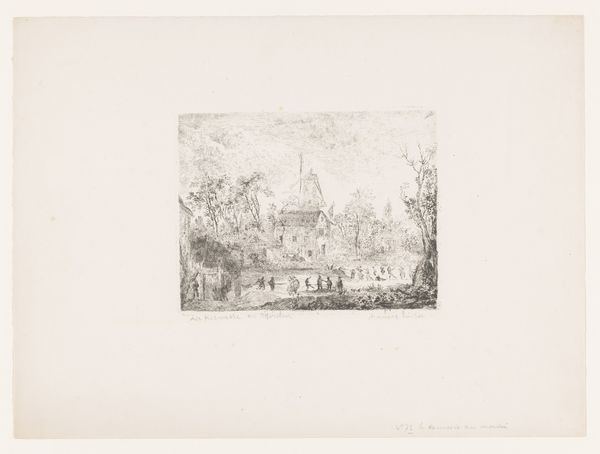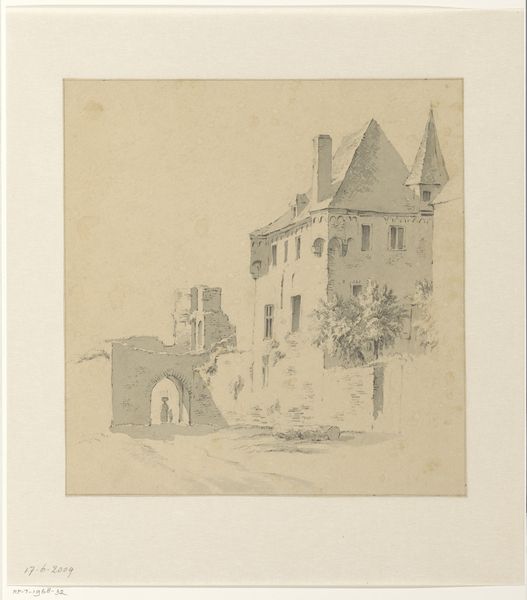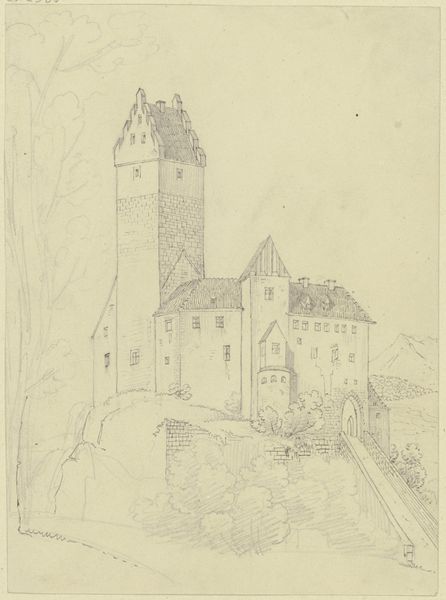
print, etching
#
medieval
# print
#
etching
#
landscape
#
realism
Dimensions: height 148 mm, width 198 mm
Copyright: Rijks Museum: Open Domain
Curator: Welcome, everyone. We're standing before Albert Van Holsbeeck's etching, "Gezicht op kasteel Bossenstein bij Broechem," dating from 1887 to 1912. It's a wonderfully detailed landscape. Editor: It's got this subdued, almost ghostly quality, doesn't it? The light is so diffused. You almost feel like it's been shrouded with dust and lost in time. The image evokes a sense of isolation. Curator: The period from when the image was produced and the etching technique allowed for a revivalist medieval aesthetic that tied back to the 19th century nostalgia for feudal order that followed the industrial revolution. It suggests an implicit criticism of contemporary urban sprawl, wouldn't you agree? Editor: Interesting to contextualize this artwork in social history terms, certainly. But it's precisely in the technique that such a longing for "feudal order" really surfaces! The use of etching, a process requiring careful labor and mastery, pushes against industrial printing techniques; the work evokes an aesthetic that promotes the value of laborious handmade craft versus mass production. Curator: Yes, and think of where such works would've been displayed at the time: exhibitions meant for cultural elites, reinforcing that division in social status between artist and artisan, while simultaneously upholding an implicit sense of value inherent in the work. Editor: I also wonder, looking at the detail, if Van Holsbeeck personally created all his prints or delegated tasks to workshop assistants? This aspect touches on questions of artist labor. What materials were used? Where did they come from? Such information reveals insight into the economic reality that allowed Van Holsbeeck's "medieval" fantasies to manifest! Curator: Those points certainly push us to look beyond just what the artist intended. It speaks to how museums themselves contribute to this hierarchy through our selections and modes of display. Are we showcasing the final artwork and neglecting the means and material condition for the work’s possibility? Editor: Precisely. By unpacking the historical contexts of artistic production, exhibition, and value attribution, we move toward a more comprehensive account of "art," one which acknowledges the work's inherent reliance upon cultural infrastructure and labor, not only the solitary, romanticized artist. Curator: I concur. By looking through your lens, I now realize we're able to discern the values society unconsciously imposes when viewing, as well as how art and class intersect with one another! Editor: Agreed! Understanding both the process and the social dynamics gives us a richer understanding. It underscores why close looking alongside contextual awareness enhances how we understand artistic creation within society.
Comments
No comments
Be the first to comment and join the conversation on the ultimate creative platform.
